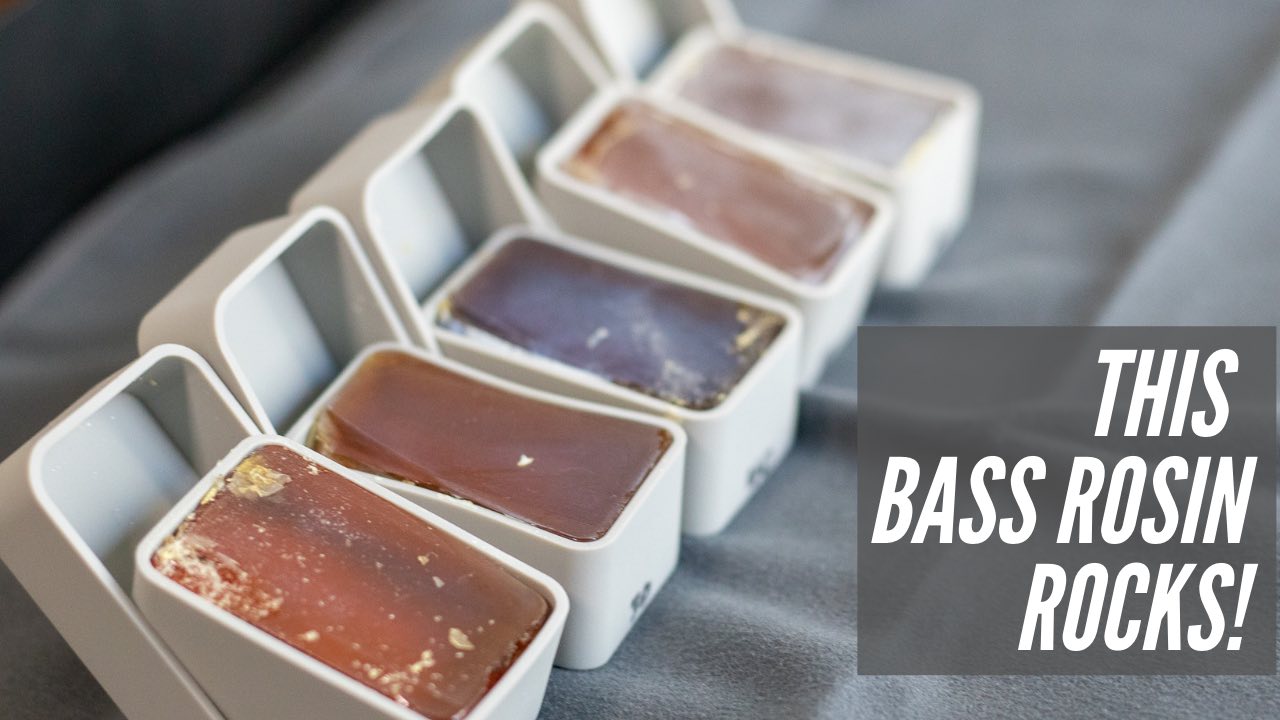I am so happy to see new double bass rosins entering the market.
For me, it’s like being a kid in a candy store. I seem to find a new favorite rosin every year or two, and I keep cycling back to old favorites like Pop’s and Kolstein on a regular basis.
Discovering Leatherwood Bespoke Double Bass Rosin
I first met Leatherwood Bespoke Rosin owner Andrew Baker at the 2019 International Society of Bassists convention, and I got the chance to see the unique take on bass rosin that Andrew is exploring.
Steve Koscica of The String Emporium also recommended that Andrew and I connect, and before I knew it, I had all five grades of Leatherwood Bespoke bass rosin in front of me.
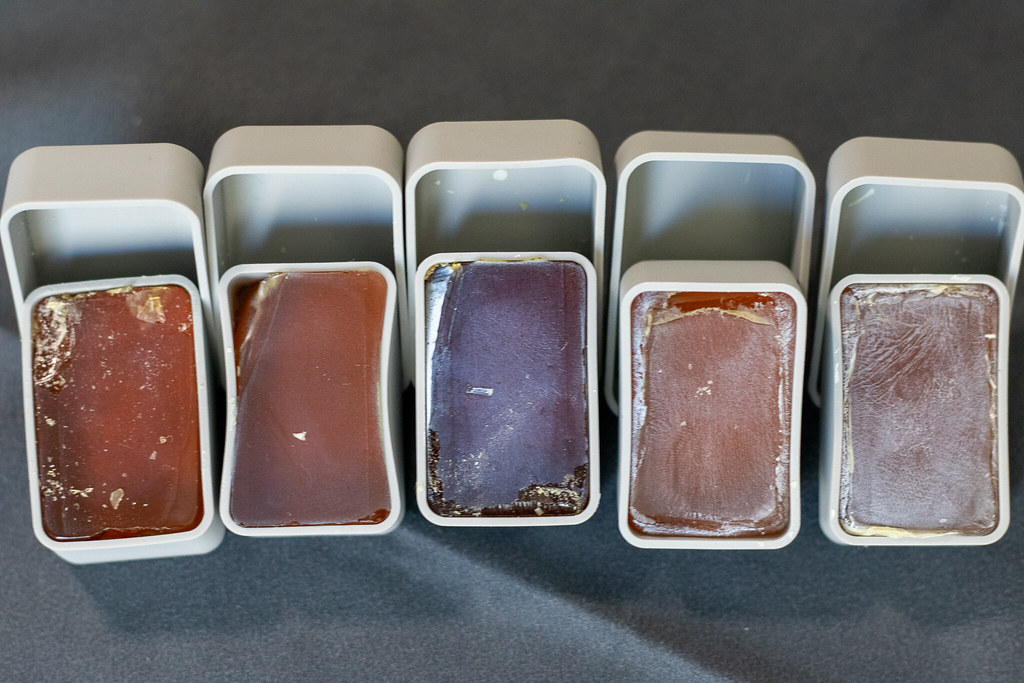
Here’s an excerpt from their website describing how these five rosins are made and advice on using them:
The Amber Range is the first comprehensive rosin system for Double Bass, and the newest rosin range from Leatherwood Bespoke Rosin.
The Amber Range is designed to help Double Bass players find the exact combination of stickiness, grip, traction & lyrical quality to suit their playing needs.Andrew Baker, Leatherwood Bespoke Rosin
The Amber Range’s rosin recipe chart offers an almost unlimited choice of recipe grades, ranging from hard rosins (similar to cello rosins) through to recipes that are very soft and sticky, with a helpful guide on how to choose the right recipe for your playing. By varying the recipe grade, Bass players can have more control over sound and response characteristics such as Grip, Traction, Lyrical Quality, and Powder Content.
I was immediately intrigued my this approach. After all, who hasn’t been frustrated when their rosin dries up in the winter or becomes a sticky mess in the summer? The concept of offering this gradation of characteristics within the same brand of rosin makes a lot of sense.
Here’s a look at the five grades offered (20%, 30%, 40%, 50%, and 60%) along with recommended playing styles and details on their grip, traction, lyrical quality, powder content, and pliability:
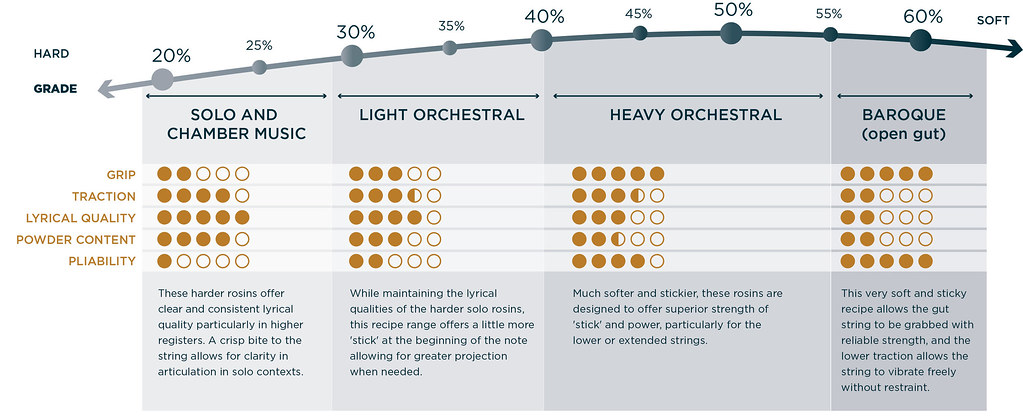
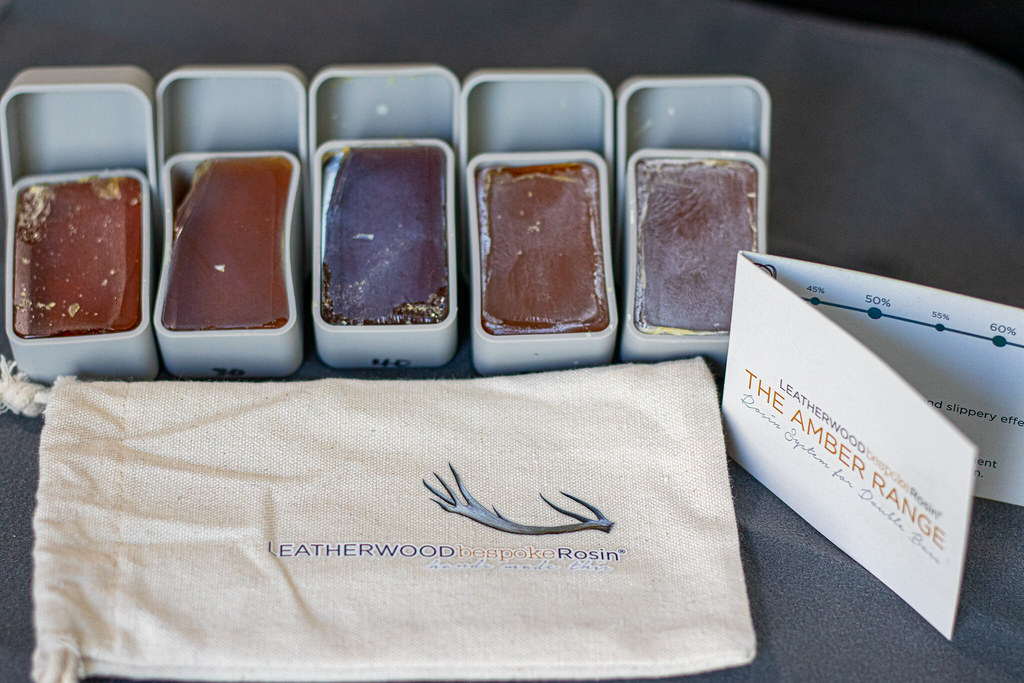
My Experiences Using Each Grade of Rosin
Over the period of a week, I took all of these rosins and experimented with them on my two bows, and I’ve got thoughts on what works best for me.
I found all five rosin grades to be remarkable, though I used the 60% grade very sparingly since I don’t typically play on open gut strings and had concerns about making my bows unusable from being overly sticky.
20% and 30% Grades
Honestly, I was surprised by how well the 20% and 30% grades performed. I typically live quite sticky rosin, and even though many bassists playing solo repertoire seem to like using violin or cello rosin, that has never really worked well for me.
Even though these lighter rosins are certainly less sticky than their higher percentage cousins, I found that the 20% and 30% grades gripped the string exceptionally well, with a beautiful singing sustain.
40% and 50% Grades
My typical preference is for rosins like Kolstein, Pop’s, Wiedoeft, and the like, so the 40% and 50% grades resonated immediately with me.
I seem to switch between the 40% and 50% depending on whether I’m playing heavier, lower position orchestral music or upper position and more lyrical music. I generally start off my day with the 40% grade, and then if I feel like I need a little more “oomph” in my playing, I switch over to the 50% grade.
60% Grade
I’ll bet this is perfect for people playing unwound gut strings. I did a bit of testing on this with my spare bow, and it certainly is sticky! It’s too sticky for the type of playing that I do, but based on the quality of the other fours rosins, I’ll bet that this is awesome for early music players.
Commonalities Between All Five Grades of Rosin
There are two interesting characteristics that all of these rosins seem to share:
- There’s very little residue that I need to wipe off the strings
- My bows seem to hold the rosin better from one day to the next
Usually, I need to get a little rosin on my bows during the first 10-15 minutes of playing. I’ll get the open strings moving first, but I find myself reaching for that rosin nearly all the time as I get going with practicing or warming up before a rehearsal or performance.
I was quite surprised at how well my bows held the rosin from the previous session. They seemed to be ready to go from the moment I pulled them out.
Another quote from their website might explain this phenomenon:
The Amber Range only uses ingredients with low or no evaporative volatility, which means in normal playing circumstances* the rosin will not degrade over time. Normal playing circumstances means there is no exposure to extreme heat, cold or humidity.
Leatherwood Bespoke Rosin
This describes San Francisco’s climate perfectly, which may be why the rosin is so stable and consistent for me.
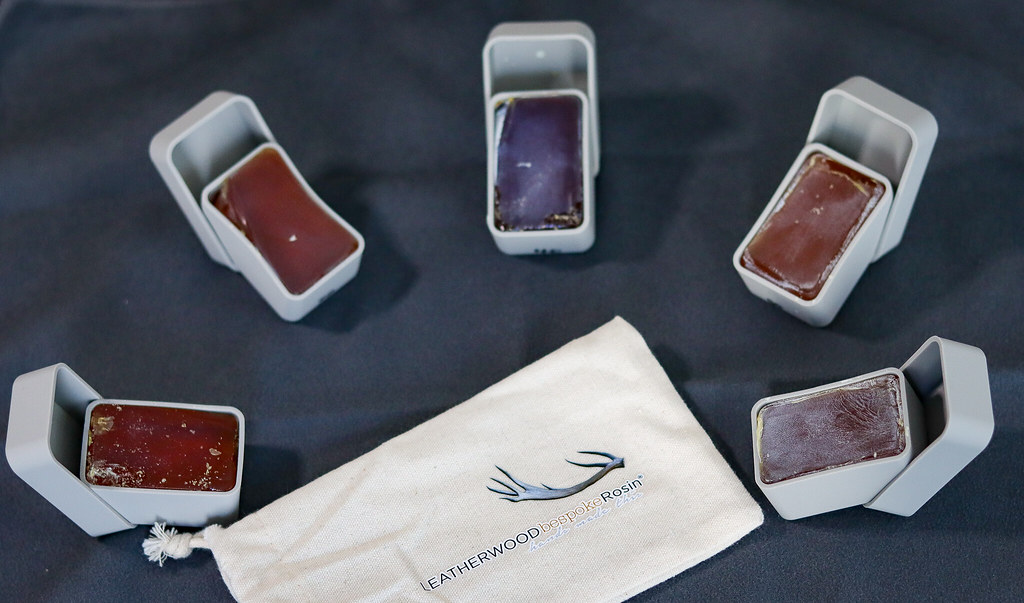
Final Thoughts
I’m really digging the approach that Andrew has taken with this rosin. It’s high quality across the board, and this system really allows a bassist to dial in the exact style of rosin for any particular style of playing. Highly recommended!
Bass News Right To Your Inbox!
Subscribe to get our weekly newsletter covering the double bass world.

